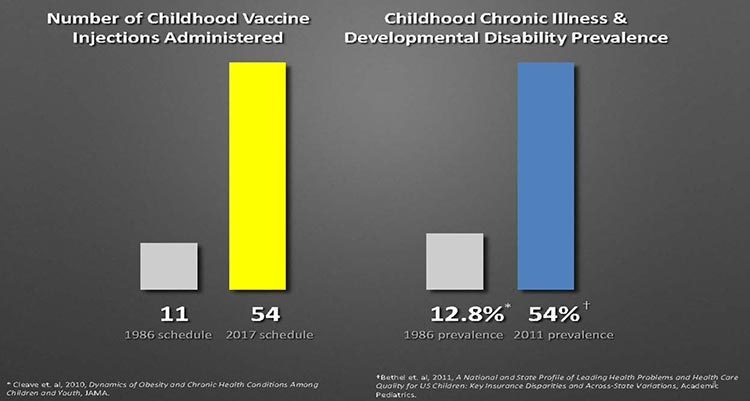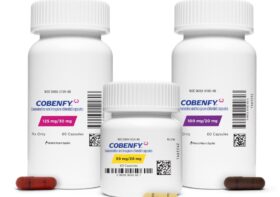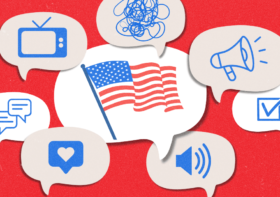What Can Megyn Kelly’s Adverse Vaccine Reaction Teach Us?

There were three highly unusual characteristics of the COVID vaccines:
- From the start, they were highly controversial and opinions on them largely split along partisan lines.
- Despite the previous, they were eventually mandated upon the entire population.
- The vaccines had an unprecedented degree of toxicity, to the point so many were injured that the majority of the population is worried about their side effects, almost half of vaccinated American adults believe they suffered an adverse reaction, and half of America believes the COVID vaccines are causing a wave of unexpected deaths.
This in turn has understandably shaken the lifelong trust many Americans held in our institutions and also has created a tragic political situation for the vaccine injured. Since the left strongly endorsed the vaccines, admitting you had an adverse reaction is a direct affront to their tribe. As a result, many liberals I’ve talked to have told me they’ve had to stay silent about their injury or risk being excommunicated.
Likewise, in the medical field, because the faith in the vaccines was so powerful, stating you had an injury was viewed as being equivalent to medical malpractice since it might encourage others not to receive the “life-saving” COVID vaccine. For example, a California doctor who has treated thousands of vaccine injured patients frequently saw local nurses only discover their co-workers had also been injured because they met each other in his waiting room.
The psychological burden vaccine injured people in those industries face is thus hard to put into words — their bodies and lives are falling apart, no one can tell them what to do (or even how to fix it) and if they speak publicly, they risk economically blacklisting themselves. As a result, I know of many VIPs and celebrities who are vaccine injured and are being treated in private but are not going public with it as they are afraid of losing their careers.
Similarly, for those working in the media (which is largely funded by the pharmaceutical industry), regardless of what they see happening to themselves, their friends or their families, they can’t speak out on the issue because of the professional risks they face for doing so. As a result, the only news hosts I know who have spoken out against the vaccine are those who left the networks to build their own platforms.
Note: The one exception I know was Tucker Carlson — who was fired immediately after giving a scathing critique of the vaccine campaign and the media’s complicity in it. Since then on Twitter, he built one of the largest independent media platforms in the world, and has increased his criticism of the vaccines (where amongst other things he stated he never got vaccinated).
For example:
• Sharyl Attkisson, a renowned Emmy-Award Winning Investigative Journalist left her prime time spot after she became fed up with management censoring her stories to became a truly independent journalist. She has repeatedly reported on the COVID-19 vaccine injuries and just hosted a town hall on treating them.
• Jimmy Dore, a popular comic who was featured on many major networks, in 2009 started building his own talk show. After being injured early in the vaccine campaign, he got red-pilled and decided to share it with his audience. For example, see this July 2021 interview describes his injury and discusses the hatred those injured by vaccines face:
• In 2017, Megyn Kelly, one of the most popular news anchors in America decided to leave Fox news and then began building her own platform. Like Dore, she now has over a million subscribers on YouTube and has given a voice to outsiders like Robert Kennedy Jr.
Kelly also initially supported the vaccine (see this tweet and her reply to it), suffered a vaccine injury, got red-pilled and has since had the courage (and economic ability) to share her concerns publicly. These remarks (which I’d recommend watching as they touch on numerous important points) were clipped from her recent show:
Note: To provide more context for Fauci’s remarks in this clip, contrary to what he said there, as detailed in Scott Atlas MD’s excellent memoir, Fauci not only zealously supported the lockdowns, but actively sabotaged any attempts to repeal them from both within the White House and throughout the national media.
Specifically in regards to her injury Kelly stated:
“I’m sorry I did to myself … I regret getting the vaccine. I don’t think I needed it, I think I would have been fine. I’d got COVID many times, and I — it was well past when the vaccine was doing what it was supposed to be doing.
And then, for the first time, I tested positive for an autoimmune issue at my annual physical, and I went to the best rheumatologist in New York, and I asked her, “Do you think this could have to do with the fact that I got the damn booster and then got COVID within three weeks?” And she said yes. Yes. I wasn’t the only one she’d seen that with.”
Note: Some have also suggested the tragic sudden cardiac death of Kelly’s sister in October of 2022 may have changed her perspective on the vaccines, but I was unable to find anything confirming this.
Vaccines and Autoimmunity
The adaptive immune system works by producing lots of white blood cells with a random protein sequence on them, and then waiting until a foreign protein (henceforth termed an antigen) comes into contact with a white blood cell whose random sequence matches the antigen.
Once this occurs, a signal is set off for the white blood cell to copy itself, and large numbers of white blood cells matching that cell form which can then bind to the new antigen and thereby protect the body from it.
While this approach has served our species well, it’s not perfect because it takes time (the right cell has to stumble across the antigen), and sometimes the needed adaptive response doesn’t form at all. The theory behind vaccination is that since infectious microbes continually reproduce inside the body, by the time an adaptive immunity forms, the infection may have progressed too far and your immunity can no longer save you (or it does but the disease you go through will be much worse).
Vaccines work by introducing one or more of the antigens from the microbe to the body and allowing you to develop an adaptive immunity to it so that when the actual (reproducing) microbe enters your body, your adaptive immunity can kick into gear before the microbe overwhelms the body. While this sounds good in theory, there are a variety ways where it runs into issue in real life.
One of them arises from the fact that for vaccines to be approved, they have to reliably stimulate an adaptive immune response to their antigen. In order for that to happen, vaccines either need to directly inject a lot of the antigen or cause the antigen to reproduce inside the body (e.g., the measles vaccine is a replicating virus), so that in either case, enough of the vaccine antigen can come into contact with the immune system for its adaptive process to occur.
Since antigens are expensive, it’s often not commercially feasible to produce enough of them for an injection to generate the desired immune response. To solve this problem, vaccines are often mixed with adjuvants which stimulate the immune system into responding to the nearby vaccine antigens. Furthermore, some antigens are more difficult to elicit a reliable response from (the ones from HPV being a classic example) and in turn require even stronger adjuvants to be used.
A major problem with provoking the immune system to produce an immune response to the vaccine antigen is that it can trigger an immune response to other antigens as well — such as those the body needs to function. For example, one study showed that mice developed allergies to pollens that were in the air at the time of their vaccination.
This becomes more of an issue when antigens in vaccines partially match those in human tissue. For example, the hepatitis B vaccine has a significant overlap with myelin (which coats your nerves and thereby allows the nerves to function).
Because of this, debilitating demyelinating disorders (e.g., multiple sclerosis) have been associated with hepatitis B vaccination, and one study showed approximately half of its recipients also developed immune reactivity to myelin (which in the majority of cases persisted for over 6 months).
Since autoimmunity is a longstanding issue with vaccines, an excellent textbook has been written compiling the numerous autoimmune disorders known to emerge from each vaccine due to the specific makeup of their antigens. Likewise, many have suspected the epidemic of autoimmunity in this country is due to increasing childhood vaccinations as:
- Autoimmune disorders are dramatically lower in unvaccinated children (e.g., see this study and this study).
- The rise of autoimmune (and allergic) disorders in this country has directly paralleled the rise of the number of required vaccinations.

Note: Many, but not all, of the disorders listed in the study cited above are autoimmune in nature.
Theoretical Risks of Autoimmunity
When the mRNA vaccines were being developed, a few major concerns emerged scientists tried to sound the alarm on, but were nonetheless ignored. One of those was that the vaccine design had a high risk for autoimmunity. This was because:
• The COVID vaccines worked by causing your body to produce large amounts of the spike protein (either with mRNA or through a virus that was modified to have the spike protein on its surface). One of the major concerns repeatedly raised when the COVID vaccines were being deployed was that the spike protein antigen had an extremely high degree of overlap with human tissue (e.g., consider this early 2021 paper).
It is basic immunology that infectious organisms which partially match human tissue frequently cause autoimmunity to the matching human tissue (e.g., this is what happens in rheumatic fever), so it was likely something similar would happen here too.
• The longer the immune system is exposed to something, the more likely it is to develop reactivity to it (this for example is why repeated exposures to a food allergen can cause food sensitivities). Since the synthetic vaccine mRNA was modified so it would resist being broken down, that meant its spike proteins would be continually produced for a prolonged period, and hence progressively increase the likelihood of an autoimmune disorder.
Note: We still do not know just how long the spike protein persists in the body since this was never properly tested — one study found the vaccine mRNA was still present at 60 days, a study of vaccine induced myocarditis found that in 25% of those patients, the spike protein persisted in the blood for the duration of the study, and autopsies have found spike protein in the tissue long after vaccination (e.g., at 4 months).
• The vaccines contained both lipid nanoparticles and mRNA, both of which were known to stimulate the immune system, but had not been sufficiently tested on humans, so their potential adjuvant induced autoimmunity was unknown.
Consider for instance what Robert Malone, one of the creators of the mRNA technology shared about the lipid nanoparticles which he began working with in the 1980s. Here he discusses he and his wife’s repeated attempted to make the delivery of lipid nanoparticles (particularly to the lungs) less toxic and the results of those experiments with mice and monkeys:
“And what we found was that they [the lipid nanoparticles] were incredibly inflammatory. They acted to recruit polymorphonuclear cells [neutrophils], recruit macrophage and monocytes, and they would cause the destruction by inflammatory process of lung tissue, very very toxic, and we could not overcome that.
The group at Genzyme did the same work that we did with a much larger team, they produced thousands and thousands of different formulations in different positively charged lipids and they also could never overcome the toxicity.
They abandoned the technology at Genzyme and we abandoned it in our research lab and went on to doing other technologies for delivery of DNA and RNA … we abandoned the cationic lipid technology because it was just too toxic.
Now flash forward to the present and a research group we had known about and interacted with for a decade at the University of British Columbia, excellent liposome researchers, that we had known about going back to the 70s and 80s had developed new formulation technology that apparently worked in animals and they did a number of things that were slightly different … and came up with something that seemed to work much better in animals which they and others believed would stay at the site where it was injected and would not circulate through the body and that they believed were much less toxic and this was the technology that was used in the current mRNA based vaccine products. We now know that they were wrong.”
In essence, this means that the lipid nanoparticles functions as a strong adjuvant that broadly increases the immune response to the vaccine product — something that has been mapped out in many recent papers like this one. I also believe the positive charges of the lipids nanoparticles (and the positive charges their lipids transfer to cell membranes) play a key role in the vaccine toxicity.
This is because the positive charges of those lipids (and more importantly, the positive charge of the spike protein) caused previously separated cells to clump together, a process that had been known for decades in the vaccine safety field to trigger both microstrokes and autoimmunity both which often are a priority for vaccine injuries (e.g., I frequently find patients improve if their physiologic zeta potential is improved).
Note: There were also significant concerns regarding the effects of the vaccine’s synthetic mRNA on the immune response which Malone explains here.
• The mRNA technology worked by having spike proteins be produced in a cell and then migrate to its surface where the immune system would see them and develop an immune response to the spike protein.
The problem with this, especially considering how innately inflammatory the spike protein was, was that it might also trigger the immune system to see the mRNA transfected cell as a foreign invader and develop an immune response to it, potentially destroying both the cell and other cells of the same type.
Note: Since the vaccine campaign started, pathologists (especially those conducting autopsies — some of which were compiled here) have repeatedly observed highly unusual inflammation in vaccine recipient tissue.
With a special test, some of these investigators confirmed that the attacked tissue had the SARS-CoV-2 spike protein (but not the nucleocapsid always found in a SARS-CoV-2 infection), indicating this could have only have resulted from the vaccine. To quote one of the pathologists summarizing his research:
“A massive lymphocytic infiltration of surrounding non-lymphatic organs or tissue with T-lymphocytes.
Lymphocytic infiltration occasionally occurred in combination with intense lymphocytic activation and follicle formation. Where these were present, they were usually accompanied by tissue destruction.
This combination of multifocal, T-lymphocyte-dominated pathology that clearly reflects the process of immunological self-attack is without precedent.
Because vaccination was the single common denominator between all cases, there can be no doubt that it was the trigger of self-destruction in these deceased individuals.”
The above illustrates why it was not a good idea to have cells express an antigen that would trigger the immune system to destroy the cell, especially since many of the nanoparticles could be expected to travel through the circulation and end up in the heart.
• As discussed above by Malone, the lipid nanoparticles traveled throughout the body, which means they could cause the body to develop a variety of different autoimmune conditions depending on which tissues they ultimately arrived at.
Later it was discovered (through a Japanese FOIA request) that Pfizer had found the lipid nanoparticles circulated through the body and concentrated in certain organs such as the ovaries (since the ovaries regulate menstruation, this may explain why menstrual abnormalities are one of the most common side effects of the vaccine — affecting almost half of female vaccine recipients).
So, given all of this, you might think that the regulators would have been quite concerned about the potential autoimmune risk of this technology. However when I read through leaked regulatory documents between Pfizer and the EMA (Europe’s FDA), I noticed that very little was done to evaluate autoimmunity and this did not appear to be a priority for the EMA.
“Thus, vaccination with modRNA is expected to induce robust neutralising antibodies and a concomitant T cell response to achieve protective immunity. Nevertheless, no further discussion was provided regarding the possibility of autoimmune responses induced by the ModRNA.
The Applicant is invited to further discuss the risk that the mRNA vaccine can trigger potential autoimmune responses and how they plan to possibly evaluate their occurrence.
Safety pharmacology programme. No safety pharmacology studies [a more detailed form of toxicology] were conducted with BNT162b2. The Applicant refers to that they are not considered necessary according to the WHO guideline (WHO, 2005). In addition, no findings on vital organ functions have been recorded in the repeat dose toxicology studies. Thus, the absence of safety pharmacology studies is accepted.
Although it is difficult to provide clear cut numbers as it depends on the sought outcome, as a general principle the ETF agreed that for reactogenicity it would be sufficient to test around 300 subjects per age stratum.
Serious rare events could be disproportionately represented in children vs. adults e.g. narcolepsy [this was an issue with the 2009 swine flu vaccine] or other autoimmune disorders that are more likely to occur in adolescents than adults.
However, such events would require sample sizes larger than 30,000 individuals to be able to detect anything. As this would be unfeasible, especially for a paediatric study, we need to rely on post-authorisation surveillance.”
All of this is similar to how they gave Pfizer a pass on evaluating if the vaccine would cause cancer, which, leading into the vaccine rollout was understandably one of the largest concerns with an experimental gene therapy.
“Genotoxicity — No genotoxicity has been provided. The components of the vaccine formulation are lipids and RNA that are not expected to have genotoxic potential. That being said, the novel lipids possess an acetamide moiety which is classified as possible human carcinogen (IARC Group 2B) with debated genotoxic mechanism, which should be discussed further.”
Note: Regulators also oddly failed to require the vaccines to be sufficiently..


